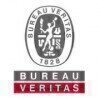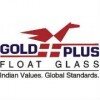


i
Intertek
Work with us
![]()
Filter interviews by
Intertek Inspection Engineer Interview Questions and Answers
6 Interview questions
W, H, R, P, and V represent different variables or parameters.
W could represent weight or width
H could represent height
R could represent radius
P could represent pressure
V could represent volume
Valves are devices used to control the flow of fluids or gases in a system.
Gate valve: used to start or stop the flow of fluid by lifting or lowering a gate
Ball valve: uses a rotating ball with a hole to control the flow
Check valve: allows flow in one direction and prevents backflow
Globe valve: controls flow by raising or lowering a disc against the flow
Butterfly valve: uses a disc to control flow by rotating it
Fittings used during charging depend on the type of refrigerant and system design.
The type of refrigerant and system design determine the fittings used during charging.
Common fittings include flare, sweat, and quick-connect fittings.
Flare fittings are commonly used in air conditioning systems.
Sweat fittings are commonly used in refrigeration systems.
Quick-connect fittings are commonly used in automotive air condit...
Data required for fire & safety
Building layout and floor plans
Location of fire exits and emergency equipment
Fire suppression systems and equipment
Fire alarm and detection systems
Emergency response plan and procedures
The depth required for IGL gas laying depends on various factors such as soil type, traffic load, and depth of other utilities.
The depth should be sufficient to prevent damage from external factors such as traffic load and soil type.
The depth should also be deep enough to avoid interference with other utilities.
The depth requirement may vary depending on the location and local regulations.
For example, in Delhi, th...
QAP, WPS, and DFT are important documents used in inspection engineering.
QAP stands for Quality Assurance Plan, which outlines the procedures and requirements for ensuring quality in a project or process.
WPS stands for Welding Procedure Specification, which provides detailed instructions for performing welding operations.
DFT stands for Dry Film Thickness, which refers to the thickness of a coating or paint applied...
Intertek Inspection Engineer Interview Experiences
7 interviews found
- Q1. HYDRO TEST work procedure
- Q2. Radiography inspection
(1 Question)
- Q1. Last salary & Work Experience
I applied via Approached by Company and was interviewed in Feb 2023. There were 3 interview rounds.

(2 Questions)
- Q1. Q- about current salary and expected salary?
- Ans.
It is important to discuss current and expected salary during the interview process.
Be honest and transparent about your current salary.
Research the market rates for the position and industry to determine a reasonable expected salary.
Consider factors such as your experience, qualifications, and the responsibilities of the role when discussing expected salary.
Highlight any additional skills or certifications that may ju...
- Q2. Q- reason why are you change the job?
- Ans.
I am changing jobs for better career growth and opportunities.
Seeking new challenges and opportunities to expand my skills and knowledge.
Looking for a company that aligns with my values and offers a better work-life balance.
Wanting to work in a more dynamic and innovative environment.
Desire to take on more responsibilities and contribute to larger projects.
Seeking better career growth and advancement opportunities.
Want...
(3 Questions)
- Q1. Q. Types of valve and it's function?
- Ans.
Valves are devices used to control the flow of fluids or gases in a system.
Gate valve: used to start or stop the flow of fluid by lifting or lowering a gate
Ball valve: uses a rotating ball with a hole to control the flow
Check valve: allows flow in one direction and prevents backflow
Globe valve: controls flow by raising or lowering a disc against the flow
Butterfly valve: uses a disc to control flow by rotating it
- Q2. Q. QAP, WPS and DFT description?
- Ans.
QAP, WPS, and DFT are important documents used in inspection engineering.
QAP stands for Quality Assurance Plan, which outlines the procedures and requirements for ensuring quality in a project or process.
WPS stands for Welding Procedure Specification, which provides detailed instructions for performing welding operations.
DFT stands for Dry Film Thickness, which refers to the thickness of a coating or paint applied to a...
- Q3. Q. What is represented by W,H,R,P and V?
- Ans.
W, H, R, P, and V represent different variables or parameters.
W could represent weight or width
H could represent height
R could represent radius
P could represent pressure
V could represent volume
Interview Preparation Tips
- NDT Inspection
- ASME Codes
Skills evaluated in this interview
I applied via Naukri.com and was interviewed in Dec 2022. There were 3 interview rounds.

(3 Questions)
- Q1. Basic knowledge of your past exp.
- Q2. Documentation amd inspection related question
- Q3. WPS and ISO related questions
(1 Question)
- Q1. They ask you about your degree and qualificatiin
Interview Preparation Tips
I appeared for an interview before Jun 2024, where I was asked the following questions.
- Q1. Do you have NDT level ii certificate ??
- Ans.
Yes, I hold an NDT Level II certificate, which qualifies me to perform non-destructive testing in various methods.
NDT Level II certification allows me to conduct tests like ultrasonic, magnetic particle, and dye penetrant.
I have hands-on experience in interpreting test results and ensuring compliance with industry standards.
For example, I successfully identified surface defects in welds using magnetic particle testing ...
- Q2. Do you know about heat treatment??
- Ans.
Heat treatment is a controlled process used to alter the physical and sometimes chemical properties of materials, primarily metals.
Heat treatment processes include annealing, quenching, and tempering.
Annealing softens metal, making it easier to work with; for example, steel is often annealed to improve ductility.
Quenching involves rapid cooling, which increases hardness; for instance, steel is quenched in water or oil.
...
- Q3. Do you know how to examine the Lab reports??
- Ans.
Yes, I can examine lab reports by analyzing data, identifying trends, and ensuring compliance with standards.
Review the report for accuracy and completeness, checking for any missing data or discrepancies.
Analyze test results against established benchmarks or standards to determine compliance.
Look for trends in the data, such as repeated anomalies or significant changes over time.
Ensure that the methodology used in the...
I applied via Naukri.com and was interviewed in Jul 2022. There were 2 interview rounds.

(1 Question)
- Q1. Previous Organization details
Interview Preparation Tips
I applied via Recruitment Consulltant and was interviewed before Mar 2022. There were 3 interview rounds.

(3 Questions)
- Q1. Related to gas pipeline
- Q2. What is required data for fire & safety
- Ans.
Data required for fire & safety
Building layout and floor plans
Location of fire exits and emergency equipment
Fire suppression systems and equipment
Fire alarm and detection systems
Emergency response plan and procedures
- Q3. In which type of fitting use during charging
- Ans.
Fittings used during charging depend on the type of refrigerant and system design.
The type of refrigerant and system design determine the fittings used during charging.
Common fittings include flare, sweat, and quick-connect fittings.
Flare fittings are commonly used in air conditioning systems.
Sweat fittings are commonly used in refrigeration systems.
Quick-connect fittings are commonly used in automotive air conditionin...
(1 Question)
- Q1. What is depth required fir igl has laying
- Ans.
The depth required for IGL gas laying depends on various factors such as soil type, traffic load, and depth of other utilities.
The depth should be sufficient to prevent damage from external factors such as traffic load and soil type.
The depth should also be deep enough to avoid interference with other utilities.
The depth requirement may vary depending on the location and local regulations.
For example, in Delhi, the min...
Interview Preparation Tips
Top trending discussions






Interview questions from similar companies

(1 Question)
- Q1. Mechanical Inspection related question

I applied via Naukri.com and was interviewed before Nov 2022. There were 2 interview rounds.

(2 Questions)
- Q1. How much gap required in fit-up of pipes.?
- Ans.
The gap required in fit-up of pipes depends on the welding process and material being used.
The gap for TIG welding is typically 1/16 to 1/8 inch.
For MIG welding, the gap can be slightly larger, around 3/32 to 1/8 inch.
The gap should be uniform along the entire length of the joint for proper welding.
The material being welded also influences the gap size, with thicker materials requiring larger gaps.
- Q2. What is IQI in radiography testing
- Ans.
IQI stands for Image Quality Indicator, used in radiography testing to ensure the quality of the radiographic image.
IQI is a tool used to determine the quality of radiographic images by measuring the image quality parameters such as contrast, resolution, and sensitivity.
It consists of a series of patterns or objects with specific details that are placed on the radiographic film along with the test object.
The IQI is the...
Interview Preparation Tips

Inspection Engineer Interview Questions & Answers
Bureau Veritasposted on 15 Mar 2024
I applied via Walk-in and was interviewed before Mar 2023. There was 1 interview round.
(8 Questions)
- Q1. Which instrument used for Surface preparation?
- Ans.
The instrument used for surface preparation is a sandblaster.
Sandblaster is commonly used for surface preparation in industries like construction, automotive, and shipbuilding.
It uses compressed air to propel abrasive material at high velocity to smooth out rough surfaces or remove contaminants.
Examples of abrasive materials used in sandblasters include sand, garnet, and glass beads.
- Q2. What are the types of welding?
- Ans.
Types of welding include arc welding, gas welding, resistance welding, and laser welding.
Arc welding: uses an electric arc to melt and join metals, such as MIG welding and TIG welding
Gas welding: uses a gas flame to melt and join metals, such as oxyacetylene welding
Resistance welding: uses electric resistance to generate heat and join metals, such as spot welding
Laser welding: uses a high-powered laser beam to melt and...
- Q3. Which NDT is used to measure sub surface defects below 12mm?
- Ans.
Ultrasonic Testing (UT) is used to measure sub surface defects below 12mm.
Ultrasonic Testing (UT) is a non-destructive testing method that uses high frequency sound waves to detect internal flaws in materials.
UT is commonly used in industries such as aerospace, automotive, and manufacturing to inspect for defects like cracks, voids, and inclusions.
The technique is effective for detecting sub surface defects as it can p...
- Q4. Which Film is used for radiography testing?
- Ans.
X-ray film is commonly used for radiography testing.
X-ray film is sensitive to X-ray radiation and produces an image when exposed.
The film is placed behind the object being tested and exposed to X-rays.
After exposure, the film is developed to reveal any defects or abnormalities.
Common types of X-ray film include industrial radiographic film and medical radiographic film.
- Q5. What is difference between pipe and tube?
- Ans.
Pipe is measured by its inner diameter, while tube is measured by its outer diameter.
Pipe is used to transport fluids or gases, while tube is often used for structural applications.
Pipe is typically manufactured to specific industry standards, while tube may have more varied dimensions and tolerances.
Examples: PVC pipe for plumbing, steel tube for construction.
- Q6. Tell any five IS codes
- Ans.
Five important IS codes related to inspection engineering
IS 456: Code of practice for plain and reinforced concrete
IS 3370: Code of practice for concrete structures for storage of liquids
IS 800: Code of practice for general construction in steel
IS 1893: Criteria for earthquake resistant design of structures
IS 875: Code of practice for design loads for buildings and structures
- Q7. What is the hydrotest pressure of vessel, as MAWP=1MPa?
- Ans.
The hydrotest pressure of a vessel with MAWP=1MPa is typically 1.5 times the MAWP.
Hydrotest pressure is usually 1.5 times the MAWP (Maximum Allowable Working Pressure)
For MAWP=1MPa, the hydrotest pressure would be 1.5 MPa
Hydrotest pressure ensures the vessel's structural integrity under pressure
- Q8. Which code is to be used as per ASME for transportation of Hydro carbon Fluids as per ASME Sec VIII Div.1?
- Ans.
ASME B31.3 is the code used for transportation of Hydrocarbon Fluids as per ASME Sec VIII Div.1.
ASME B31.3 code is used for transportation of Hydrocarbon Fluids
ASME Sec VIII Div.1 is for pressure vessels, not transportation
Examples: ASME B31.3 code is used for pipelines carrying hydrocarbon fluids
Interview Preparation Tips
Intertek Interview FAQs
Tell us how to improve this page.
Intertek Interviews By Designations
- Intertek Inspection Engineer Interview Questions
- Intertek HR Executive Interview Questions
- Intertek QC Chemist Interview Questions
- Intertek Civil Engineer Interview Questions
- Intertek Quality Analyst Interview Questions
- Intertek Project Manager Interview Questions
- Intertek Senior Analyst Interview Questions
- Intertek Assistant Manager Interview Questions
- Show more
Interview Questions for Popular Designations
Overall Interview Experience Rating
based on 10 interview experiences
Difficulty level
Duration
Interview Questions from Similar Companies
Intertek Inspection Engineer Reviews and Ratings
based on 130 reviews
Rating in categories
|
Inspection Engineer
221
salaries
| ₹2.3 L/yr - ₹9 L/yr |
|
Lab Technician
167
salaries
| ₹1.8 L/yr - ₹4.3 L/yr |
|
Quality Engineer
152
salaries
| ₹2.1 L/yr - ₹7 L/yr |
|
Chemist
71
salaries
| ₹2 L/yr - ₹5 L/yr |
|
Assistant Manager
55
salaries
| ₹4.7 L/yr - ₹12 L/yr |

Bureau Veritas

CMS Infosystems

TÜV NORD

Medhaj Techno Concept
- Home >
- Interviews >
- Intertek Interview Questions












